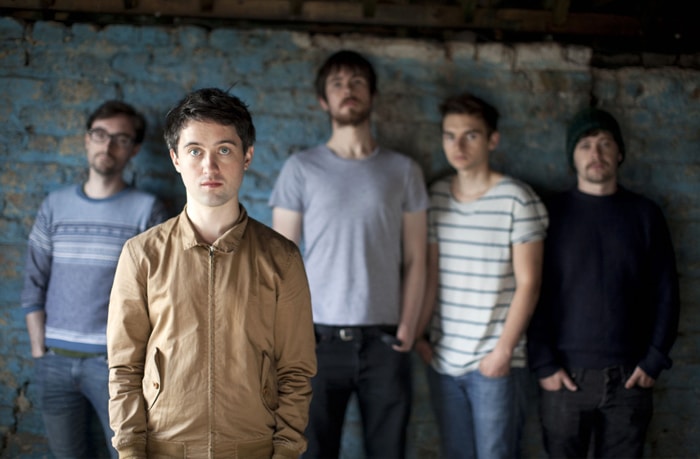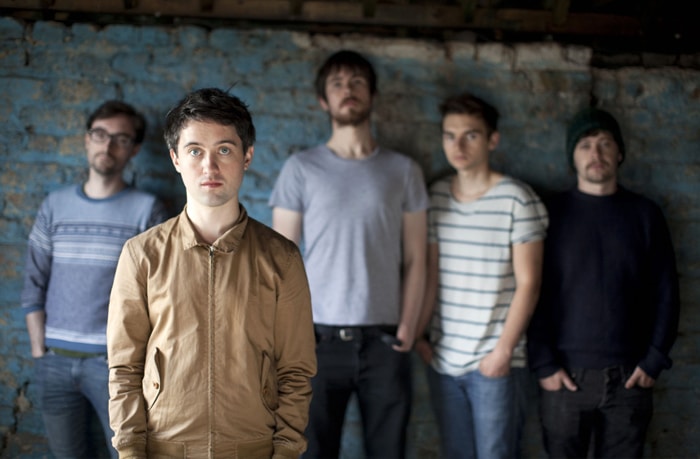A Terrible Beauty is Born: The Irish Revolution in Music


The ground is covered in white, but the rapidly approaching holiday seems to be universally known as a time for green. Whether you’re Irish-Catholic or not, chances are that you’re probably familiar with or have celebrated the feast day of the patron saint of Ireland, Patrick, on March 17th. This is, of course, Saint Patrick’s Day, or more colloquially referred to as “St. Paddy’s” in the United States.
It helps that the major qualifications to celebrate the day are pretty menial – to adorn something green, prepare some bad traditional Irish food, and enjoy some Irish Whiskey or Guinness (that is if you are of age). Maybe if you’re feeling dicey you may even want to have your hand at listening to some Irish music. But what Irish music is out there, aside from U2 (I know, yuck) and the Cranberries, and why does it sound so hokey for the most part?
“Now and in time to be, wherever green is worn, are changed, changed utterly: A terrible beauty is born.” The legendary closing lines of William Butler Yeats’ final stanza from his poignant memorial poem, Easter, 1916, captured a glimpse of the Emerald Isle’s turning point between a tortured history and an imminent cloudy future. The reason Irish music seems so antiquated and folky is because of a history which has never really had any point of cultural enlightenment or renaissance.
For most of its existence, Ireland was a cultural and social backwater on the fringes of Europe, a war-torn country volatile with corruption, famine, and rebellion. This all changed at the inception of the 21st century during World War I, when around 1,200 rebels took a stand to take the country for their own at the General Post Office in Dublin.
A storm brewing for some time, the attempt for independence in 1916 was the culmination of Irish republicanism which had been steadily building for generations, through spoken word, story, and music. Though the attempts to liberate the country were crushed by British forces, the soldiers who were executed for their actions would live on as focal points for years to come in song and story, as seen through Yeats’ poem.
The failed Easter Sunday rebellion would also result in continued skirmishes over the next 3 years across Ireland, ultimately leading up to the Irish-Anglo war of independence (1919-1921) and the Irish Civil War (1922-1923). Even when peace finally followed after a decade of bloodshed, tensions were still present. Between the constant fighting, a divide formed between the different cultural groups of Ireland, with Catholic Republicans and Protestant Loyalists constantly at ends with one another.
This atmosphere would pervade the entire century during a period referred to as “the Troubles”, where Republicans attempted to liberate Northern Ireland and loyalists backed by the British retaliated to the attacks. Ireland was in a continued state of guerilla warfare between paramilitary groups until 1998, when the Good Friday Agreement allowed for a truce between the sides. But what does all this historic bloodshed have to do with the music of Erin? Simply put, everything!
It was previously mentioned that there was never a cultural revolution or renaissance as a result of constant turmoil in the country, but the events in 1916 helped to inspire a plethora of folk music which endured through the decades and acted as a cultural pillar. The folk revival of the 60s saw an extremely brief yet powerful ignition of influence from Ireland which put an impression on the international map. An outpouring of story, emotion, and song filled the atmosphere, with artists such as the Clancy Brothers & Tommy Makem, The Dubliners, and The Chieftains becoming wildly popular.
While the innocence of the early 60s let these artists toy with songs of rebellion and the glorification of war, the bloodshed of the next thirty years would make the genre far more controversial. Some artists relished in the cultural taboos and connotations the music came with, such as the Wolfe Tones. Others would manipulate the genre, defenestrating the stigma of “Irishness” during a time when being Irish was nothing to be proud of in the United Kingdom; in other words, I’m talking about the Pogues and their disdainful, resilient Celtic-punk essence.
Not all of the music during this time was folk, however, as the introduction of rock and roll bombarded the nation’s culture as well. One of the major differences between genres is that many early artists strived to avoid sounding Irish or similar to “Irish” music, since the genre became dé modé and tied with intense political connotations. Rory Gallagher left his mark on the blues scene, Thin Lizzy’s “The Boys are Back in Town” still hits airwaves, and Van Morrison became a household name in soft rock.
The ’80s and ’90s, considered some of the worst years for sectarian violence during the Troubles, saw the boldest forms of music that emanated from Ireland. Rather than avoid politics and identity, the artists during this generation largely turned their views back onto themselves for content, writing and producing music which was largely reflective of the suffering and tribulations on the island. The Cranberries’ Everybody Else is Doing It, So Why Can’t We?, Sinead O’Connor’s the Lion and the Cobra, and yes, U2’s WAR all were albums with chart-topping singles and hits. Though these albums put the state of Irish-British politics in the ear of popular music, these albums communicated that the people of Ireland were tired of fighting over the land they lived upon. Truly, a terrible beauty was born.
Irish republican and British loyalist paramilitary sectarian groups officially came to an armistice with each other in 1998 through the Good Friday Agreement. This allowed for the border to open between Ireland and Northern Ireland, commencing a process of prosperity, commerce, and healing. The last generation of music from Ireland has been particularly fruitful, filling a cultural vacancy which has stood in the shadow of the Anglosphere (e.g., Britain, American, and Australia). What has come out is a cohort of artists who have not felt the need to write politically or with identity, nor stick to any particular genre; freedom of creativity, in a sense.
Some of the more popular artists from the island of Ireland in recent years include radio giants Hozier, Two Door Cinema Club, and Snow Patrol. Other artists who may not receive as much airplay but are equally influential and popular in their own genres include My Bloody Valentine, Kodaline, and All Twins (stylized as All Tvvins). Of course, there are some anomalies who have become internationally famous somehow, such as the Limerick born comedy hip hop duo, the Rubberbandits, who specialize in rapping poorly in what sounds like bad 80s songs and wearing plastic bags on their heads at all times.
Even in the last five years, the music scene of Dublin has unleashed an interesting flavor of indie and alternative music which has become more accessible to listeners through online listening platforms. Villagers’ psychedelic island groove is wildly unusual for the traditional scene, Hatchlings’ soul-folk-jazz trifecta of sound ponders reflections and feelings of everyday life in modern Ireland, and Lemoncello’s air of acoustic serenity seems to have a soul-healing passion. Some artists such as Junior Brother (no, not the Jonas Brothers) harken an acoustic sound similar to Philadelphia punk and indie (i.e., the Menzingers and Modern Baseball), while other artists such as Gareth Quinn Redmond venture into entirely new territory through pairing fiddle with synth-ambient music.
The new explosion of color and variety produced by Irish artists, however, has not smothered their roots by any means. If anything, one of the greatest assets the young artists of Ireland have is the rich canvas of Irish folk to build off of for a complex and unique sound – and it is being fully utilized.
Seasoned by anxieties of the housing crisis, economic fogginess, and the uncertainty of Brexit next door, Lankum produces a sonic monolith of giddy doom-folk, incorporating elements from hardcore punk rock and drone metal into acoustic instruments. Solas is a fiery Irish-American group which follows closer to the guidelines of traditional Irish folk with meticulous precision and definition, while inversely The Gloaming creates entire orchestral pieces through the overhaul and epistemological redefinition of Irish jigs and sean-nós singing. And how could Irish folk be mentioned without a proper nod to Daoiri Farrell, who is rejuvenating forgotten ballads and songs with his powerful voice and performance of bouzouki?
Radie Peat of Lankum recently stated in an interview with the Irish Independent, “… I think that embarrassment that Irish people had about the music, or their accents or their Irishness, has long gone thankfully. There are so many great trad tunes that we should be proud of – and there are more to come.” One could argue, however, that Ireland has more to be proud of than just its traditional folk tunes after taking a look into the current state of the music produced from the island.
Through adversity over centuries, even to the boiling point of the 20th century, Ireland endured through hardship, carrying its unique musical culture. Now, a new age dawns, providing a rich and unique sonic landscape waiting to be explored. It is an exciting time – a true revolution in Irish music for both listener and artist – and it will be interesting to hear what comes next. So when March 17th rolls around this year, why not put on some Irish music while you raise your glass to a Sláinte? With such a variety, there’s bound to be something you’ll like – I guarantee it.
Article By: Connor J. Brogan
